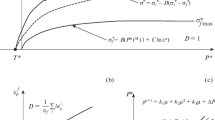Abstract
Jamming may occur during the loading of the workpiece in the fixture and cause an improper locating process or damage to the workpiece, fixture, and loading system. Consideration of the jamming phenomenon is a necessary task in the planning of the workpiece loading strategy. In the present paper, the minimum norm principle is used to present an analytical model for predicting the jamming occurrence conditions through calculating reaction forces at the contact points. The implementation of this model results in an optimization problem that is solved using the augmented Lagrange multiplier method. The proposed model is applied to two well-known jamming problems, namely the peg-in-hole and block and palm configurations. Numerical analysis is also conducted in Adams software to verify the theoretical predictions. Finally, the experimental setups are fabricated for these configurations to validate the theoretical predictions and numerical results. The results show that the maximum errors between the theoretical predictions and experimental results are 14.4% and 3.8% for the jamming-out angle in the peg-in-hole study and jamming-in travel in the block and palm problem, respectively. Moreover, the worst-case error of 6.9% is obtained for the theoretical prediction of the jamming-in travel of block compared to the numerical result. Agreement between the theoretical, numerical, and experimental results proves the capabilities of the suggested model in the accurate prediction of the jamming occurrence conditions and its potentials for use in the three-dimensional jamming-prone fixturing systems.














Similar content being viewed by others
Data availability
Not applicable
Code availability
Not applicable
Notes
Acrylonitrile Butadiene Styrene.
Fused Deposition Modeling.
References
Trinkle, J.C., Zeng, D.C.: Prediction of the quasistatic planar motion of a contacted rigid body. IEEE Trans. Robot. Autom. 11, 229–246 (1995). https://doi.org/10.1109/70.370504
Pang, J.-S., Trinkle, J.C., Lo, G.: A complementarity approach to a quasistatic multi-rigid-body contact problem. Comput. Optim. Appl. 5, 139–154 (1996). https://doi.org/10.1007/BF00249053
Pang, J.-S., Trinkle, J.C.: Complementarity formulations and existence of solutions of dynamic multi-rigid-body contact problems with Coulomb friction. Math. Program. 73, 199–226 (1996). https://doi.org/10.1007/BF02592103
Zbiciak, A., Kozyra, Z.: Dynamics of multi-body mechanical systems with unilateral constraints and impacts. Proc. Eng. 91, 112–117 (2014). https://doi.org/10.1016/j.proeng.2014.12.024
Chatterjee, A., Ruina, A.: A new algebraic rigid-body collision law based on impulse space considerations. J. Appl. Mech. 65, 939–951 (1998). https://doi.org/10.1115/1.2791938
Liu, T., Wang, M.Y.: Computation of three-dimensional rigid-body dynamics with multiple unilateral contacts using time-stepping and Gauss–Seidel methods. IEEE Trans. Autom. Sci. Eng. 2, 19–31 (2005). https://doi.org/10.1109/TASE.2004.840074
Stewart, D.E.: Time-stepping methods and the mathematics of rigid body dynamics. In: Guran, A. (ed.) Impact and Friction of Solids, Structures and Machines. Birkhäuser, Basel (2000)
Montrallo Flickinger, D., Williams, J., Trinkle, J.C.: Performance of a method for formulating geometrically exact complementarity constraints in multibody dynamic simulation. J. Comput. Nonlinear Dyn. 10, 011010 (2015). https://doi.org/10.1115/1.4027314
Stewart, D.E., Trinkle, J.C.: An implicit time-stepping scheme for rigid body dynamics with inelastic collisions and Coulomb friction. Int. J. Numer. Methods Eng. 39, 2673–2691 (1996). https://doi.org/10.1002/(SICI)1097-0207(19960815)39:15<2673::AID-NME972>3.0.CO;2-I
Stewart, D., Trinkle, J.C.: An implicit time-stepping scheme for rigid body dynamics with Coulomb friction. In: Proceedings 2000 ICRA. Millennium Conference. IEEE International Conference on Robotics and Automation. Symposia Proceedings (Cat. No. 00CH37065). pp. 162–169. IEEE Press, New York (2000)
Dupont, P.E., Yamajako, S.P.: Jamming and wedging in constrained rigid-body dynamics. In: Proceedings of the 1994 IEEE International Conference on Robotics and Automation, pp. 2349–2354. IEEE Comput. Soc., Los Alamitos (1994)
Trinkle, J.C., Yeap, S.L., Han, L.: When quasistatic jamming is impossible. In: Proceedings of IEEE International Conference on Robotics and Automation, pp. 3401–3406. IEEE Press, New York (1996)
Liu, T., Wang, M.Y., Low, K.H.: Non-jamming conditions in multi-contact rigid-body dynamics. Multibody Syst. Dyn. 22, 269–295 (2009). https://doi.org/10.1007/s11044-009-9165-3
Usubamatov, R., Leong, K.W.: Analyses of peg-hole jamming in automatic assembly machines. Assem. Autom. 31, 358–362 (2011). https://doi.org/10.1108/01445151111172943
Nategh, M.J.: Machine Tools Jig and Fixture Design. Tarbiat Modares University Press, Tehran (2012)
Parvaz, H., Nategh, M.J.: Development of an efficient method of jamming prediction for designing locating systems in computer-aided fixture design. Int. J. Adv. Manuf. Technol. 86, 2459–2471 (2016). https://doi.org/10.1007/s00170-016-8401-2
Sathirakul, K., Sturges, R.H.: Jamming conditions for multiple peg-in-hole assemblies. Robotica 16, 329–345 (1998). https://doi.org/10.1017/S0263574798000393
Fei, Y., Zhao, X.: Contact and jamming analysis for three dimensional dual peg-in-hole mechanism. Mech. Mach. Theory 39, 477–499 (2004). https://doi.org/10.1016/j.mechmachtheory.2003.11.003
Huang, Y., Zhang, X., Chen, X., Ota, J.: Vision-guided peg-in-hole assembly by Baxter robot. Adv. Mech. Eng. 9, 168781401774807 (2017). https://doi.org/10.1177/1687814017748078
Hou, Z., Philipp, M., Zhang, K., Guan, Y., Chen, K., Xu, J.: The learning-based optimization algorithm for robotic dual peg-in-hole assembly. Assem. Autom. 38, 369–375 (2018). https://doi.org/10.1108/AA-03-2018-039
Zhang, K., Shi, M., Xu, J., Liu, F., Chen, K.: Force control for a rigid dual peg-in-hole assembly. Assem. Autom. 37, 200–207 (2017). https://doi.org/10.1108/AA-09-2016-120
Zhang, K., Xu, J., Chen, H., Zhao, J., Chen, K.: Jamming analysis and force control for flexible dual peg-in-hole assembly. IEEE Trans. Ind. Electron. 66, 1930–1939 (2019). https://doi.org/10.1109/TIE.2018.2838069
Rao, S.S.: Engineering Optimization. Wiley, Hoboken (2009)
Software MSC, Adams tutorial kit for mechanical engineering courses (2016)
Funding
Not applicable
Author information
Authors and Affiliations
Corresponding author
Ethics declarations
Conflict of interest
The authors declare that they have no conflict of interest.
Additional information
Publisher’s Note
Springer Nature remains neutral with regard to jurisdictional claims in published maps and institutional affiliations.
Rights and permissions
About this article
Cite this article
Parvaz, H., Hosseini, S.V. & Heidari, M. Modeling of jamming phenomenon in fixture design application: an analytical, numerical, and experimental study. Multibody Syst Dyn 52, 229–253 (2021). https://doi.org/10.1007/s11044-020-09775-5
Received:
Accepted:
Published:
Issue Date:
DOI: https://doi.org/10.1007/s11044-020-09775-5



